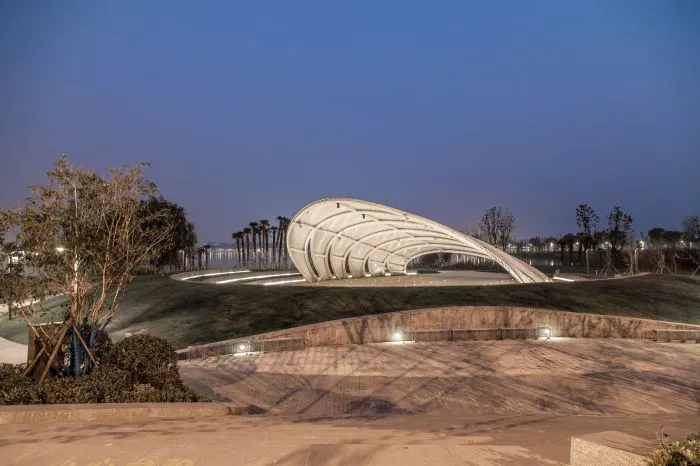Sixteen unassuming lounge chairs along Wuhan’s East Lake have unexpectedly become a social media sensation, embodying China’s growing urban wellness movement. Installed in April 2022 as part of an ecological upgrade project, these 1.2-meter-wide recliners face away from the water view but perfectly channel the lake’s acoustic rhythms. “The design intentionally directs attention to auditory rather than visual stimuli,” explained the project designer, noting how overhead osmanthus trees filter sunlight while amplifying wave sounds against stone embankments.
The Science Behind the Serenity
Positioned on a gentle slope with 3-meter spacing, the chairs create what visitors describe as a “collective solitude” experience – private enough for relaxation yet conducive to quiet socialization. Scenic area managers report peak usage during September’s osmanthus bloom season, when floral aromas complement the acoustic environment. Recent visitor tracking shows average occupancy durations exceeding 90 minutes, with many users like tourist Ms. Chen from Henan reporting “time dilation effects” while observing sunlight patterns through the canopy.
Meeting Modern Urban Psychological Needs
This phenomenon aligns with the globally recognized “20-minute park effect” – the documented psychological restoration achievable through brief nature immersion. Wuhan’s urban planners have inadvertently created an ideal “third space” between work and home, with the chairs’ orientation reducing visual overstimulation while enhancing ambient sound reception. Environmental psychologists suggest the setup mimics sound therapy principles, where rhythmic wave patterns induce meditative states.
Design Philosophy With Visitor Experience at the Core
The scenic area’s management revealed to local media that the chairs’ dimensions and placement resulted from extensive pre-installation behavioral studies. “We observed visitors naturally gravitating toward these acoustically rich but visually obscured areas,” noted the project lead. Each chair’s slightly reclined 110-degree angle was calibrated for optimal comfort without encouraging prolonged sleep, while the powder-coated steel frames withstand 200kg loads for universal accessibility.
Growing Demand for Urban Respite Spaces
With social media posts about the chairs amassing over 20 million views, authorities are considering expanding the concept to other suitable locations. The initiative reflects broader trends in Chinese urban green space design – moving beyond ornamental functions to create intentional restorative environments. As cities increasingly prioritize mental health infrastructure, Wuhan’s accidental innovation demonstrates how subtle design choices can transform public spaces into wellness destinations.
Related Topic:
- Morocco: A Tapestry of North African Wonders
- Australian Tourism Industry Rides China’s Visa-Free Wave
- 2025 Chinese Opera Festival Debuts in Vienna with Stunning Wu Opera Performance

